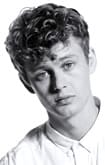When it comes to exercises that everyone should perform, squatting will undoubtedly feature. This compound exercise is truly phenomenal and although primarily considered a lower limb exercise, if performed correctly and regularly you will quickly notice overall gains in both strength and size. The problem with this exercise is that not many individuals who perform it know how to perform it correctly. There are certain exercises where diminished form will not create too many issues, squatting isn’t one of them! This exercise is all about discipline and technique. Even slight deviations away from the norm can be catastrophic and result in serious injury. One thing I’ve noticed in gyms up and down the country is that very few individuals know where to place their feet during a squat. Narrow? Shoulder width apart? Wide? The answer to these questions lies very much with you, the athlete, and your personal goals. So we thought we’d put an end to this and dispel all the rumours regarding foot positioning and squatting so that you can make an informed and educated decision.
Getting Your Stance Correct
Where you position your feet will strongly determine which muscles you bring into action. It’s no different to grip positioning during a lateral pulldown or flat bench press. Let’s commence with a narrow stance and feet close together. During this stance, your toes should be pointing straight ahead. This will place particular emphasis on the outer Quadriceps muscle group with particular reference to Vastus Lateralis. So what happens when this positioning is altered to a shoulder width apart stance? During this foot placement, your toes should point slightly in an outwards direction. This stance allows for overall Quadriceps muscle development. This is normally an individual’s strongest squatting stance, generally speaking. If you continue to widen your squatting stance then you will require to also further point out your toes in an outwards direction. During this foot positioning the primary emphasis is now shifted onto all muscles of the inner thigh. This includes Vastus Medialis of the Quadriceps muscle group and your Adductors. Simply by altering your foot positioning and stance you can quickly vary the primary recruitment of muscles and place different emphasis on certain muscles of the leg. If you’re looking to develop overall muscular strength then positioning your feet shoulder width apart with your toes slightly pointed outwards should yield the best results. There’s absolutely no reason why you shouldn’t include all variations in a leg session however. Why not initially start shoulder width apart and then ensure each muscle within the Quadriceps complex is well and truly tested by adopting both the wider and narrower positioning. It is also important to note that through adopting a narrower stance you are also directly affecting your ability to balance. Bear this in mind when moving between stances as you might require altering the resistance or utilising a Smith machine to aid balance.
Final Word
So there you have it, a simple explanation of how altering your foot positioning during squatting can significantly vary your muscular emphasis for the subsequent movement. Now you’re equipped with the knowledge, why not put it to the test in your next leg session.






